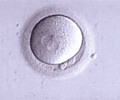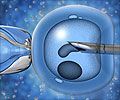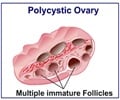According to the latest reports from fertility specialists, the number of babies born to women who had a single-embryo transfer (SET) is increasing.
The reports stemmed from the Australian Institute of Health and Welfare (AIHW) and the Fertility Society of Australia. In addition, it was seen that these babies had better outcomes as against babies whose mothers had a double-embryo transfer (DET).The report titled Assisted Reproduction Technology in Australia and New Zealand 2005, is the eleventh in the series and shows that SET cycles accounted for 48.3 per cent of embryos transfer cycles in 2005, as against 28.4 per cent in 2002.
According to Professor Michael Chapman, clinical adviser of the AIHW National Perinatal Statistics Unit at the University of New South Wales, since 2002 when the Fertility Society of Australia recommended single embryo transfer in women under 35 years of age and never more than a two embryo transfer in any women, there has been a significant rise in the number of single-embryo transfers. Correspondingly, there has been a reduction in twin pregnancies with their associated increased mortality and brain damage.
'In 2005, 86.0 per cent of deliveries following embryo transfer cycles were singleton deliveries, the highest proportion ever reported,' Professor Chapman informs.
'Only 8 per cent of SET live-born babies were low birth-weight, compared to 25 per cent of DET live-born babies. These SET babies had a mean birth-weight of 3,302 grams, which is markedly higher than the average birth-weight of 2,937 grams of DET live-born babies,' he added.
For singletons born as the result of a SET, the proportion of pre-term birth was 9.6 per cent but rose to 11 per cent for singletons born as the result of a DET.
Advertisement
Figures give that in Australia and New Zealand in the year 2005, there were 51,017 treatment cycles, including 3,356 donor sperm insemination cycles. Of these cycles, 91.1 per cent (46,481) were from Australian fertility centers and 8.9 per cent (4,536) were from New Zealand's centers.
Advertisement
Of the 9,764 babies born to women who had treatment in Australia and New Zealand in 2005, 75.6 per cent (7,381) were singletons, 23.5 per cent (2,298) were twins, and 0.9 per cent (85) were higher order multiples.
Source-Medindia
ANN/V











